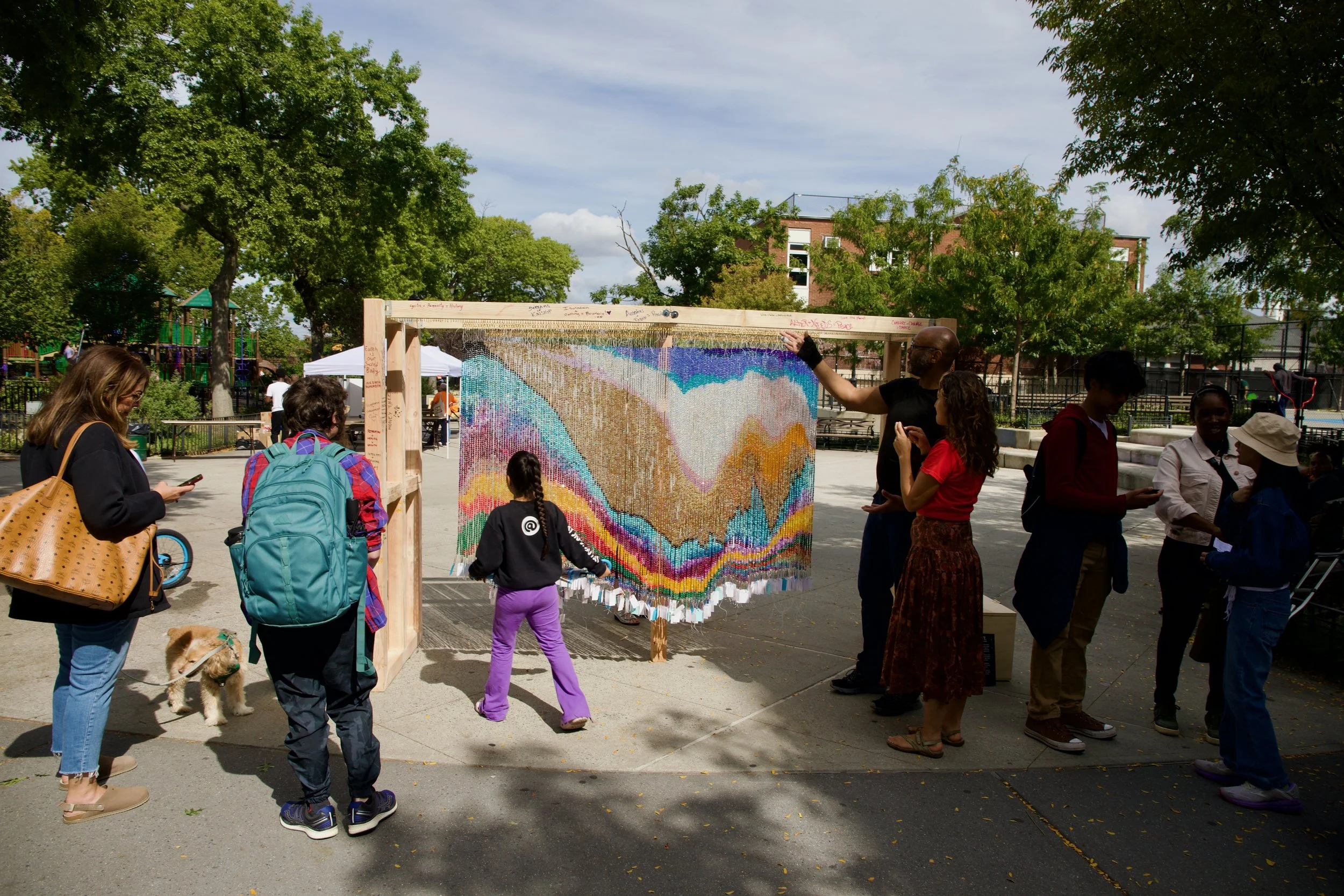Wealth Inequality, 1890-Present, in 12,000 Beads
By Ernest Verrett & Anjali Deshmukh, of Street Works, MJN
This timeline of wealth, extrapolated from a graph by Stella Muti of the World Inequality Database, shows the share of wealth held by the top .001% from 1890–2020 — the black line. Back in the 1890s, the top .001 owned about ~8.5% of wealth, compared to the bottom 50% with just 1.75%. Overtime, that gap slowly closed, narrowing to its lowest point on record in the 1970s.
After that, wealth inequality started to go up again. We see sudden plummets, during 2008 recession and the 2020 Pandemic. But both plummets are followed by sudden and rapid increases in inequality that leave us even worse than we were before.
2025 Street Works Earth. “Mean. Equity.” By Ernest Verrett & Anjali Deshmukh. Photo by Felix Masi.
Accurate wealth data is very hard to collect, especially since the wealthy are very skilled at hiding their money and global tracking systems haven't always been around. But even though the data is imprecise, we see a pattern that we think has to do with how power shifts in moments of crisis between two forces we call hoarders and reclaimers.
Hoarders—the .001%–1%—cling to their wealth as a form of power. Most believe they “deserve” it, including inherited fortunes, and that there is no such thing as enough. They protect their assets, extract as much as they can from others, and avoid risks that could threaten their position. They innovate creatively — around hoarding and eliminating inconveniences: financial tools to shield fortunes, suppression of ideas that might undermine their power, softening travel, avoiding lines. Fossil fuels and the systems built on them anchor their fortunes, and the fear of loss is so strong that they will use their wealth to keep us entrenched in planetary destruction.
Reclaimers, on the other hand, fight to restore what has been unjustly taken. They design policies that balance wealth, power and opportunity, from fair taxation to democracy and collective services. And they innovate for collective goods. After the crisis of World War II, when inequality was lower and public investment higher, Reclaimers laid the groundwork for industries like computing and built the foundations of the internet—later privatized by Hoarders. Renewable energy had Reclaimer roots too, though fossil fuel interests keep trying to slow or block it.
Crises have either led to a moment of Reclamation or a chance for Hoarders to further consolidate their wealth. World Wars I and II triggered policies that reduced inequality and fueled collective innovation. But the late 1970s and 80s saw Hoarders regain the upper hand. During the 2008 financial crisis, banks were bailed out, households suffered, and the top 1% captured nearly all income gains in the following years. During COVID-19, stimulus reached families, but billionaires added over a $1 trillion to their fortunes in the first year alone. Crises no longer lead to restorative action. They amplify inequality.
Now, the greatest crisis of all is here: climate breakdown. Despite the danger to humanity, hoarders double down on fossil fuels and profit from destruction while shaping the rules to protect their wealth and crush inventions for collective good. If we continue on this path, each crisis will be another opportunity for Hoarders to reshape the world as a dark age of poisons in our air and water, poverty, authoritarianism, and natural disaster.
The fear of loss and the addiction to wealth is powerful. It is also possibly a fundamental dark side of being human. We think system rehabilitation is possible, but in the meantime, only a great Reclamation — of extreme wealth, power, and resources — can stop the spiral and give us a fighting chance to meet the climate crisis with the invention we deserve.
Excessive Wealth Has Run Amok—This Must Stop - Inequality.org.
Dynasty Trusts: How the Wealthy Shield Trillions from Taxation Onshore
Causes of income inequality in the United States - Wikipedia
Impact of the 2008 Recession on Wealth-Adjusted Income and Inequality for U.S. Cohorts - PMC.
What’s caused the rise in income inequality in the US? | World Economic Forum.
A Year of Billionaire Pandemic Gains - Institute for Policy Studies.

